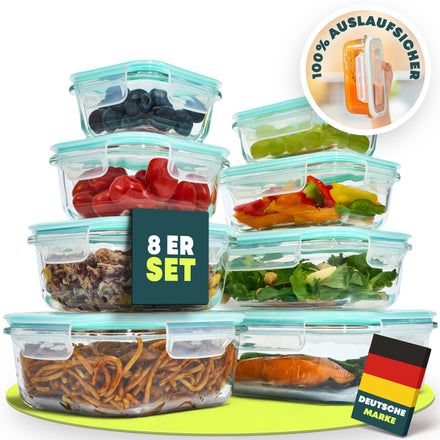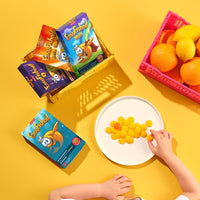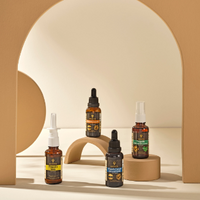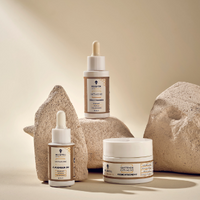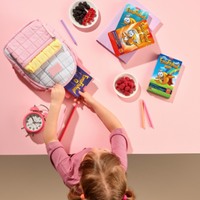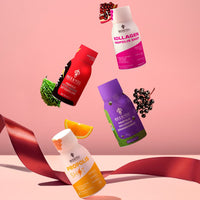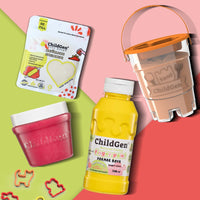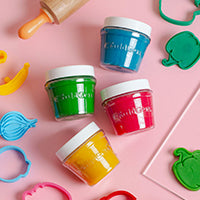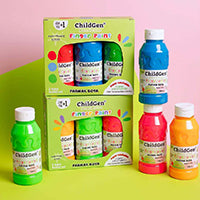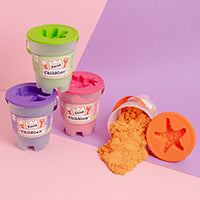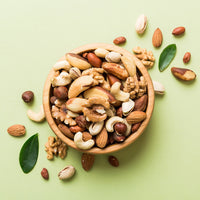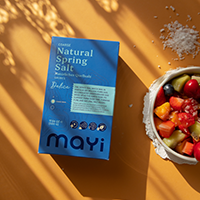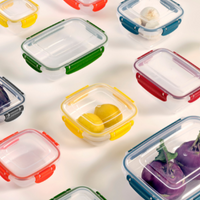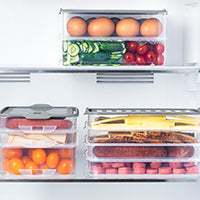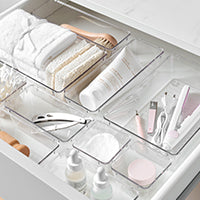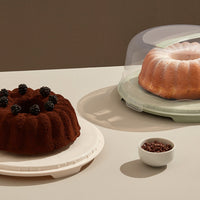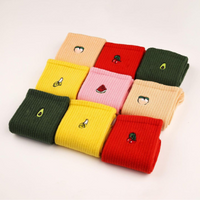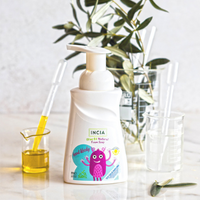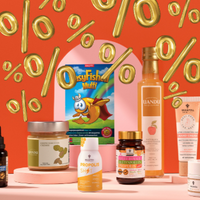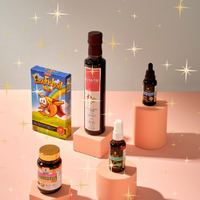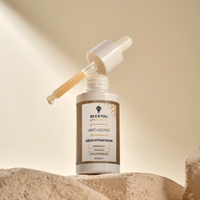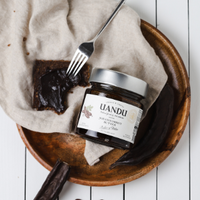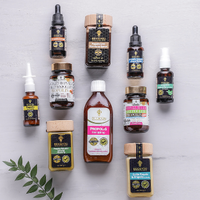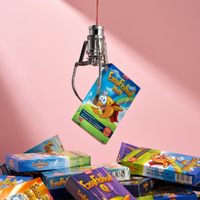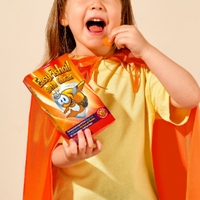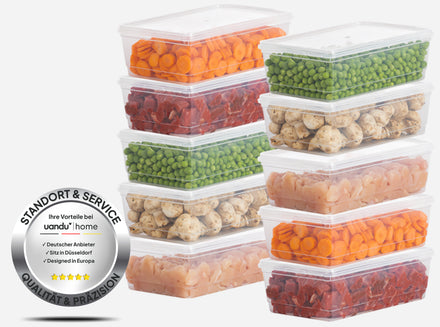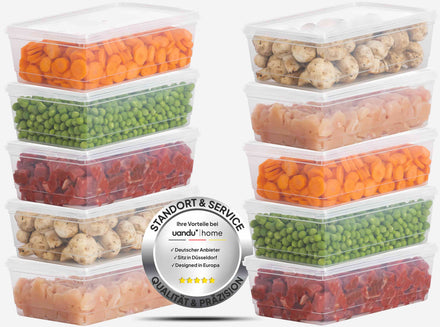Omega-3 fatty acids - don't forget the kids!
Omega-3 fatty acids EPA (eicosapentaenoic acid) and DHA (docosahexaenoic acid) are important components for our body and should be available in sufficient quantities. Even during pregnancy, the omega 3 fatty acids are of central importance for the healthy development of the embryo.
The two Omega 3 fatty acids are essential, which means they are vital and must be consumed through food because the body cannot produce them itself. EPA (eicosapentaenoic acid) and DHA (docosahexaenoic acid) are mainly found in cold seawater fish such as anchovy, mackerel, salmon, herring. Not every child likes to eat fish more than once a week, so Omega 3 for children should be part of children's nutritional supplements.
These important fats are particularly important for children's development and growth and have many other health benefits. In this article we will discuss the benefits of Omega 3 fish oil products for children, give dosage recommendations and thus answer the question of whether Omega 3 fatty acids are suitable for children.
A good supply of EPA/DHA is particularly important for children:
A good supply of EPA/DHA is particularly important for children:
- as prerequisites for the development of intelligence
- their fine motor skills
- the development of their social behavior
- for their visual acuity
- as protection against allergies
- for a strong immune system
- with ADHD
A deficiency can have different effects on children
A deficiency can have different effects on children
- Physical and mental development
- lack of concentration
- Attention and learning disorders (ADHD = Attention Deficit Hyperactivity Syndrome)
- Growth disorder
- forgetfulness
- Disorders of falling asleep and staying asleep
- Susceptibility to infections, allergies
- Limited vision, especially in the dark
Scientific studies on children
SCHOOL CHILDREN
Perception, attention and the processing of external stimuli improved in more than 70 percent of school children from the Omega 3 group. [1]
PREGNANCY
For women in the omega 3 groups, the risk of preterm birth (34 weeks gestation or less) was reduced by 41% and the risk of stillbirth was reduced by 26%. In addition, the children in the group without omega 3 fish oil had a 10% increased risk of being born underweight. [2]

Omega-3 reduces the risk of premature birth and stillbirth. In addition, the risk of children being born underweight is reduced.
ADHD Attention Deficit Hyperactivity Disorder in Children
ADHD Attention Deficit Hyperactivity Disorder with children
- Several research groups examined the influence of omega 3 fatty acids on aggressive behavior and attention deficit hyperactivity disorder (ADHD) in children and adolescents. The clinical studies showed [3]
- “Improving perceived health status and the life quality of the patients as well as with the reduction of health problems , in particular Hyperactivity/inattention and behavioral disorders” (dosage: between 123 mg and 3200 mg omega 3 fatty acids per day) [4]
- “Reduction in ADHD symptoms, including improvements in hyperactivity, impulsivity, attention, visual learning, word reading, and working/short-term memory ” (exact doses not given in some cases) [5]

Asthma in children
Omega 3 fish oils such as EPA and DHA can reduce asthma and reduce symptoms. Asthma is a chronic condition that affects children and adults, causing symptoms such as difficulty breathing, chest pain, coughing and wheezing.
Dosage recommendation for children
The daily dosage recommendation depends on the age and gender of the child. Scientists and doctors do not agree on what the right dose of omega-3 is in children. According to the National Institutes of Health, the recommended daily intake of ALA for children is as follows:
- 0-12 months: 0.5 grams
- 1-3 years: 0.7 grams
- 4-8 years: 0.9 grams
- Girls 9-13 years: 1.0 grams
- Boys 9-13 years: 1.2 grams
- Girls 14-18 years: 1.1 grams
- Boys 14-18 grams: 1.6 grams
Foods such as fish, nuts, seeds, and vegetable oils are excellent food sources for consuming omega-3 fatty acids. Alternatively, if your children do not enjoy eating these foods, consider supplementing with omega-3 for children.
Here you should stick to the recommended daily.
Follow the recommended dosage recommendation in children to reduce and avoid possible side effects.

The 6 benefits of our Omega-3 products for children
- All of our products from the EasyFishoil series such as EasyFishoil Q-Omega 3 with choline (2x30 pieces) taste and smell great. This means that children have no problems eating these high-quality products.
- High nutrient content: The gel form of EasyFishoil Q contains, for example, 655.2 mg fish oil, 295 mg omega-3 fatty acids, 823 mg DHA and 64,865 mg EPA, choline, vitamin B6, B12 and folic acid.
- Easy to take thanks to patented technology. The products are easy to chew and are made in soft jelly form.
- EasyFishoil is an easyVit brand, which is a member of GOED's Plus category. They set quality standards for Omega-3 and carry out regular analyzes.
- The packaging is of particularly high quality. The soft jellys are each individually packed in aluminum blisters and therefore offer protection from air, light and moisture. This prevents oxidation.
- Easy Fishoil for children is made in a factory in Norway in the town of Andenes. The manufacturer's name is Vitux and manufactures the products with the patented ConCordix technology here. This was developed through collaborative R&D research with the Norwegian University of Science and Technology.
Difference of Omega 3 jelly form to fish oil tablets
Children can easily consume Easyvit jelly form Omega 3 varieties thanks to its soft shape that melts in the mouth. Omega 3 capsules and omega 3 tablets can get down their throats when swallowed by children because they are hard. Jelly form melts from the moment it enters the mouth so it cannot get stuck in the throat.
Our Omega-3 products for children are particularly high quality. They have a nice smell and taste. The high nutrient content and safe packaging are a quality feature. Your kids will love them!
Which EasyFishoil?
Click now to find out which EasyFishoil is right for your child by answering a few quick questions!
Häufig gestellte Fragen
Warum ist es für Kinder wichtig Omega-3 Fettsäuren einzunehmen?
Kann Omega 3 die Symptome bei Asthma bei Kindern lindern?
Welche gesundheitlichen Vorteile hat Omega-3 bei Kindern noch?
Gibt es Nebenwirkungen bei Kindern?
Welche tägliche Dosierung für Kinder wird bei Omega 3 empfohlen?
Wie macht sie Omega-3 Mangel bemerkbar?
Wann sollte man Omega-3 nicht einnehmen?
